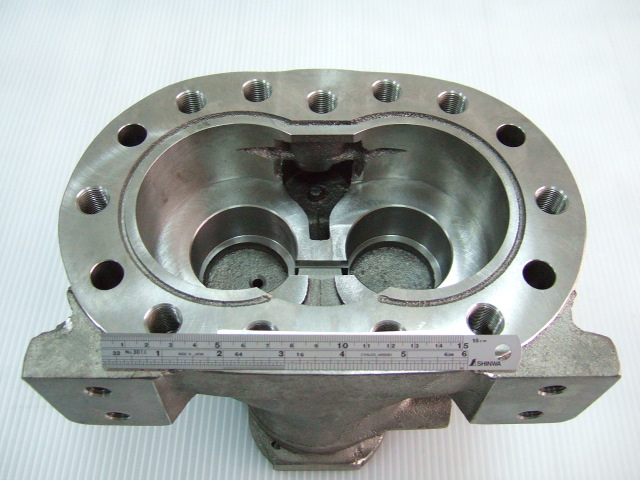CNC machining is a highly precise manufacturing process used across various industries. Whether it’s for producing parts, molds, or prototypes, selecting the right material is key to ensuring product quality, performance, and cost efficiency. So, how should materials be chosen in CNC machining? Which materials are suitable? This article will answer these common questions and help you make the best decision for your CNC machining project
Common Types of CNC Machining Materials
In CNC machining, material selection directly impacts the part’s function, appearance, and lifespan. Below are some of the most commonly used materials in CNC machining and their characteristics:
Aluminum
Characteristics: Aluminum is a lightweight metal with good mechanical properties and corrosion resistance, making it suitable for high-speed machining.
Applications: Automotive parts, aerospace components, electronic enclosures.
Advantages: An advantage of using aluminum in CNC machining is that aluminum extrusion profiles can be utilized to reduce the cost of creating the entire profile through CNC machining. This approach allows for only the detailed features and dimensions that cannot be achieved through extrusion to be machined. So, this is relatively in general low CNC machining cost choice。However, material AL 7075 cann’t be extruded to a complex profile, except just a bar or billete.
Disadvantages: Not suitable for high-temperature or high-load environments.

Surface Treatments:
Anodizing: Enhances corrosion resistance and allows for coloring.
Powder Coating: Provides a thick, durable layer with a wide range of color options.
E-Coating: Offers thin, uniform corrosion protection.
Chromate Conversion Coating (Chem Film): Provides basic corrosion protection while maintaining electrical conductivity.
Stainless Steel
Characteristics: Stainless steel offers high strength and excellent corrosion resistance, making it ideal for harsh environments.
Applications: Medical devices, food processing equipment, construction components.
Advantages: High durability, good heat resistance.
Disadvantages: More challenging to machine and higher cost than aluminum. It’s also possible to create profile by casting, but the casting die is in general higher than aluminum extrusion die.
Surface Treatments:
Passivation: Improves corrosion resistance by removing free iron from the surface.
Electropolishing: Enhances surface smoothness and corrosion resistance.
Powder Coating: Adds a thick, colored layer for additional protection and aesthetics.
Brass
Characteristics: Brass has excellent machinability, corrosion resistance, and electrical conductivity.
Applications: Plumbing fittings, electrical components, musical instruments.
Advantages: Easy to machine, suitable for precision machining. Particularly for turning process.
Disadvantages: Higher material cost, not ideal for high-load applications.
Surface Treatments:
Plating (Nickel, Chrome, or Gold): Enhances corrosion resistance and improves appearance.
Polishing: Achieves a bright, attractive finish.
Lacquering: Adds a protective clear coating to maintain appearance.
Engineering Plastics
Characteristics: Engineering plastics like POM, Nylon, and PTFE have good mechanical properties and chemical resistance.
Applications: Mechanical parts, gears, insulating components.
Advantages: Lightweight, resistant to chemical corrosion.
Disadvantages: Lower hardness and strength compared to metal materials. Also for parts that requires very tight dimension tolerance, engineering plastic is not recommended, because
high temperature created during CNC machining may impact the variation of the dimensions.
Surface Treatments:
Painting: Adds color and protection.
Texturing: Improves grip or changes surface aesthetics.
Flame Treating: Improves adhesion for subsequent coatings or printing
Factors to Consider When Selecting CNC Machining Materials
When choosing materials for CNC machining, consider the following factors based on different requirements and applications:
- Functional Requirements: The material should meet the functional demands of the part, such as heat resistance, corrosion resistance, or strength.
- Machining Difficulty: Different materials have varying machining properties. Hardness, toughness, and ductility can affect machining difficulty and time.
- Cost Considerations: Material cost and machining costs (e.g., tool wear, machining speed) should be included in the total cost assessment.
- Surface Treatment Needs: Some materials are easier to process for secondary surface treatments, such as anodizing or plating, which should be considered during material selection.
Frequently Asked Questions (FAQ)
Q1: Which material is best for CNC machining prototypes?
- A1: Aluminum is often the most popular choice because it is easy to machine, relatively low-cost, and has good mechanical properties.
Engineering plastic is also idea for 3D printing for prototypes.
Q2: How can I determine if a material is suitable for my application?
- A2: You can start by considering the functional requirements of the part and then consult with a CNC machining company for professional advice.
Q3: Is the machining cost of stainless steel much higher than aluminum?
- A3: Yes, due to its higher hardness, stainless steel causes more tool wear and longer machining times, making it more expensive than aluminum. Also, as said, casting die is much higher cost than aluminum extrusion, should one want to create profile for saving machining cost.
Conclusion
Choosing the right CNC machining material is crucial to ensuring product quality and performance. Each material has its pros and cons, and the selection should be based on the specific application and requirements. If you have any questions about material selection or need expert advice, please contact us, and our expert team will provide the best solution.
